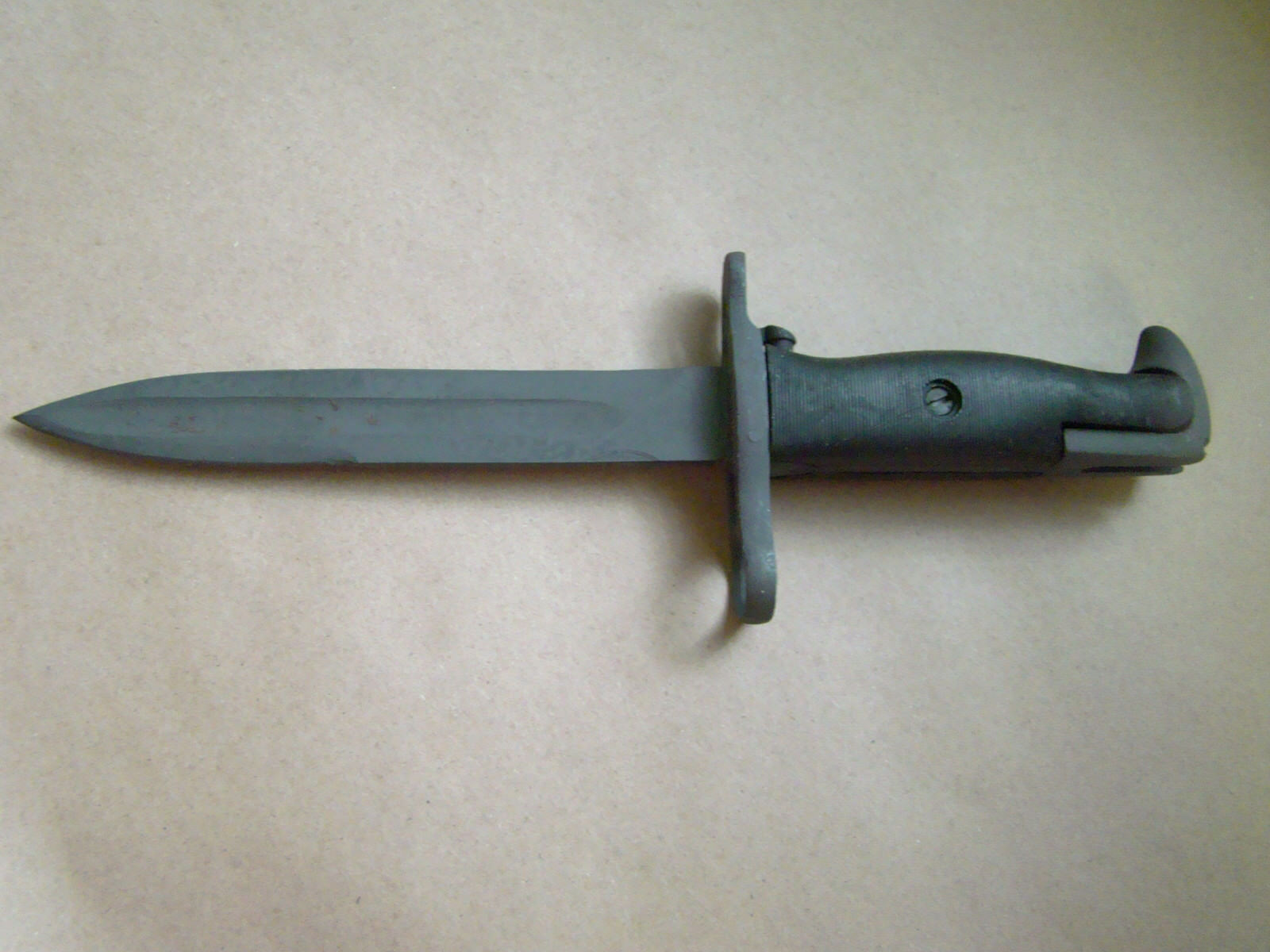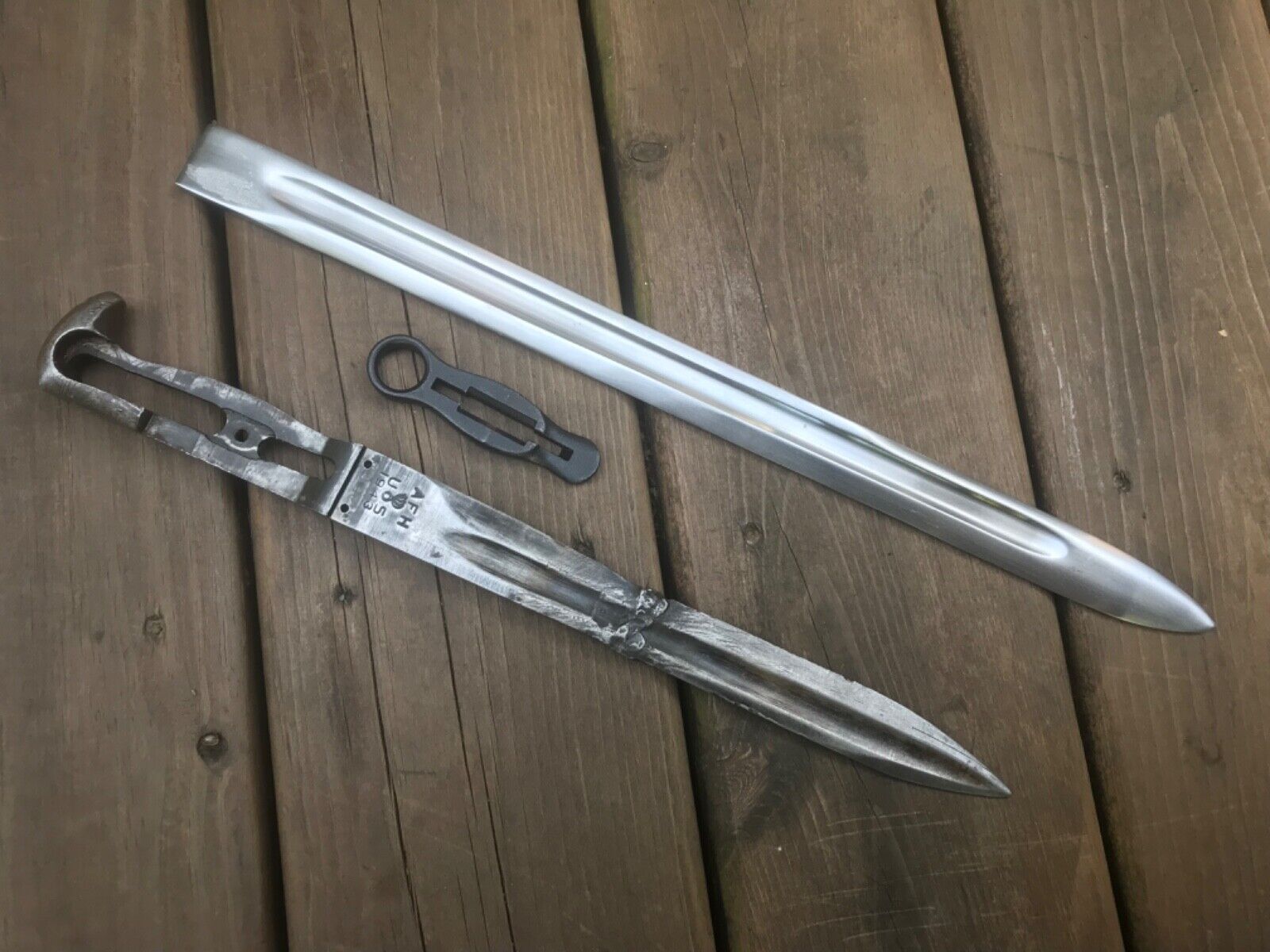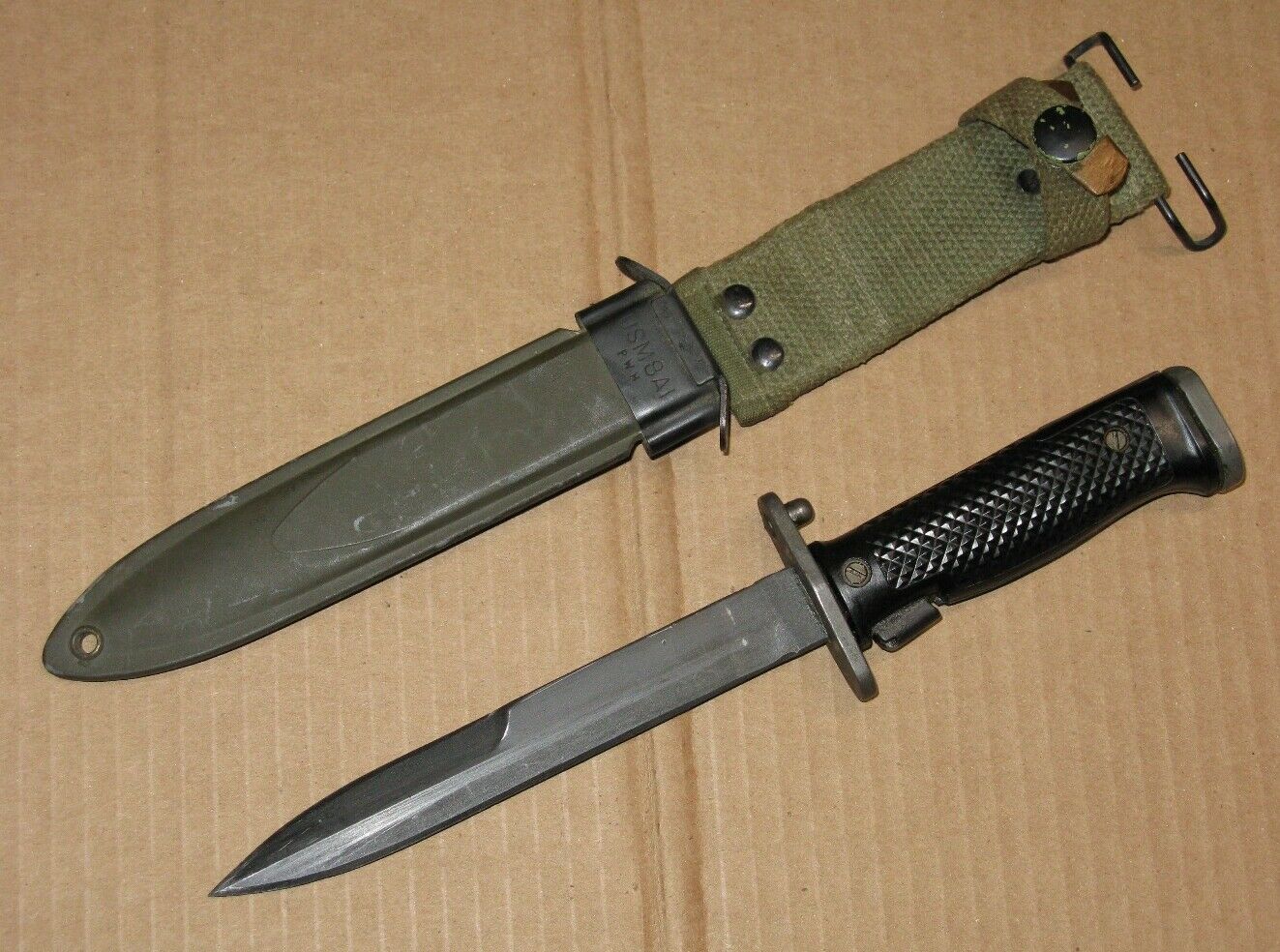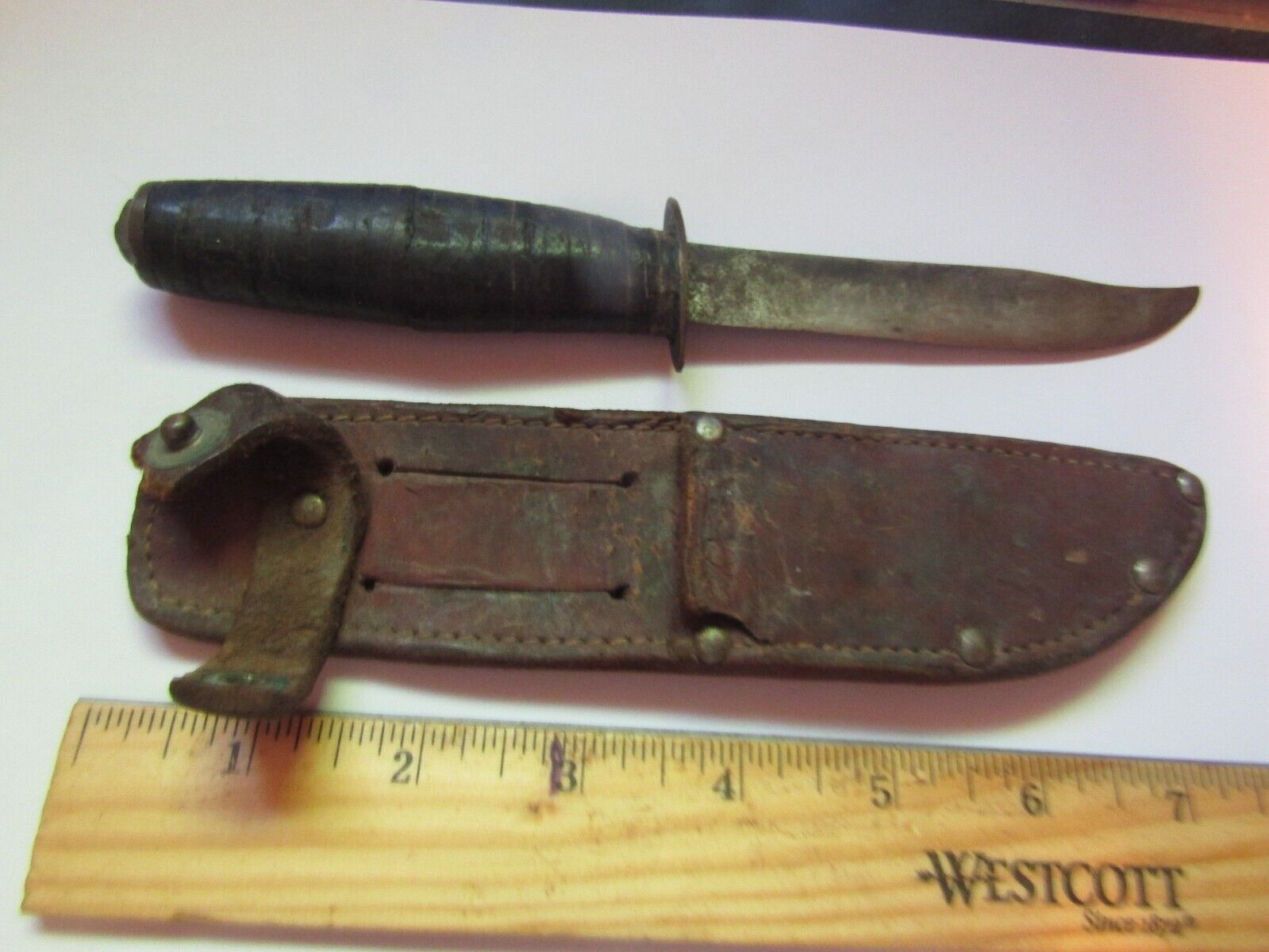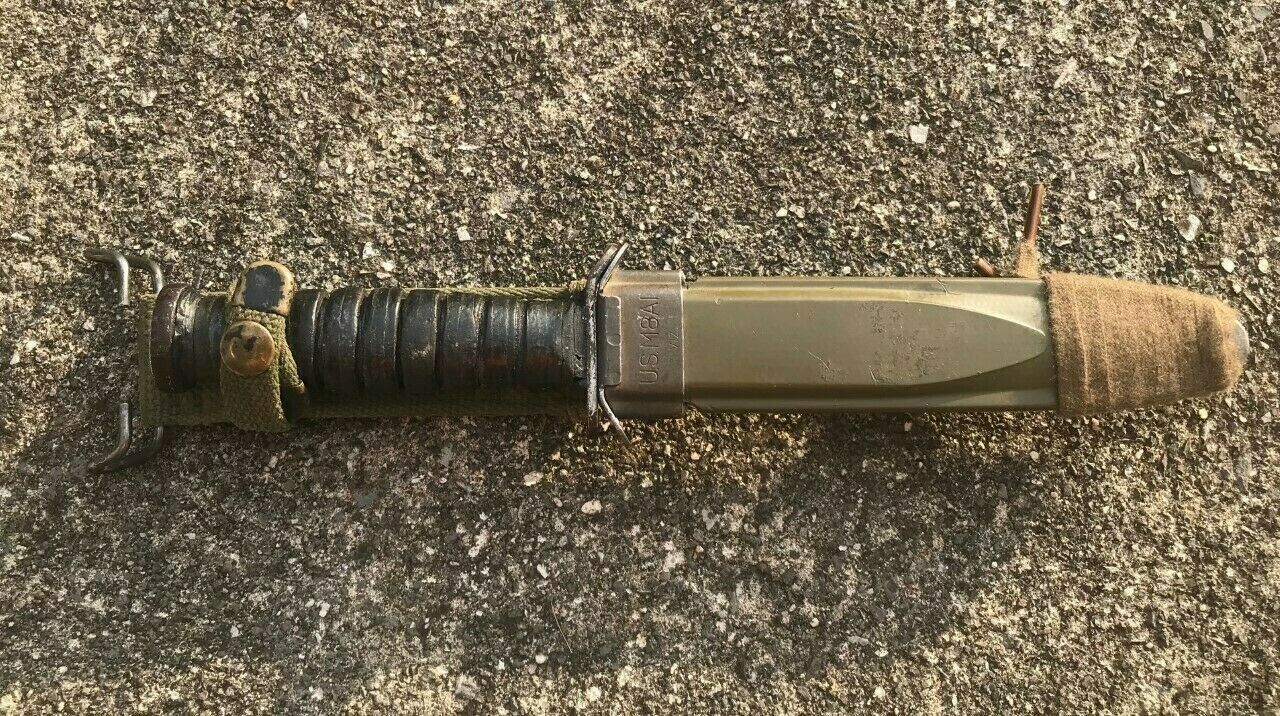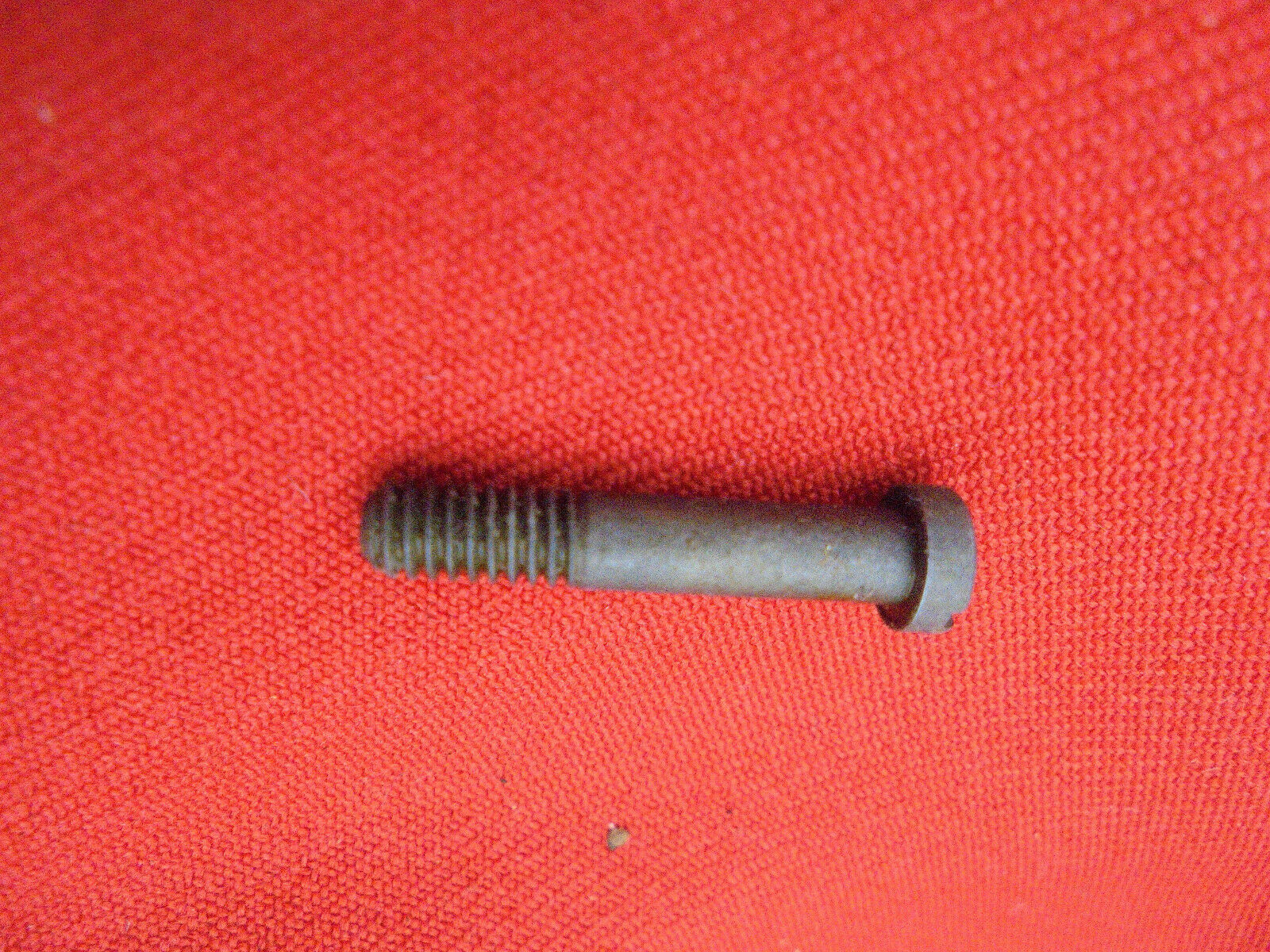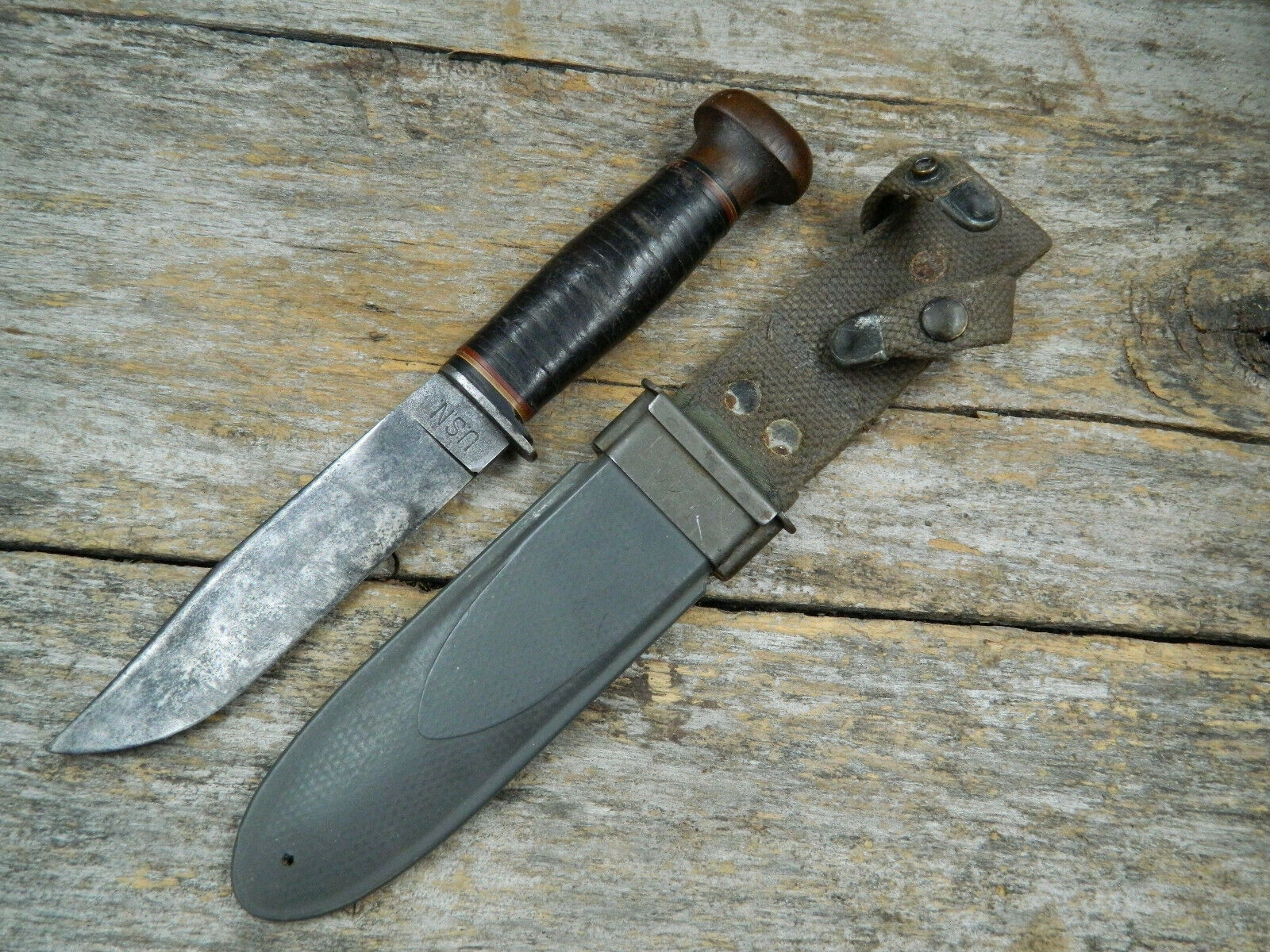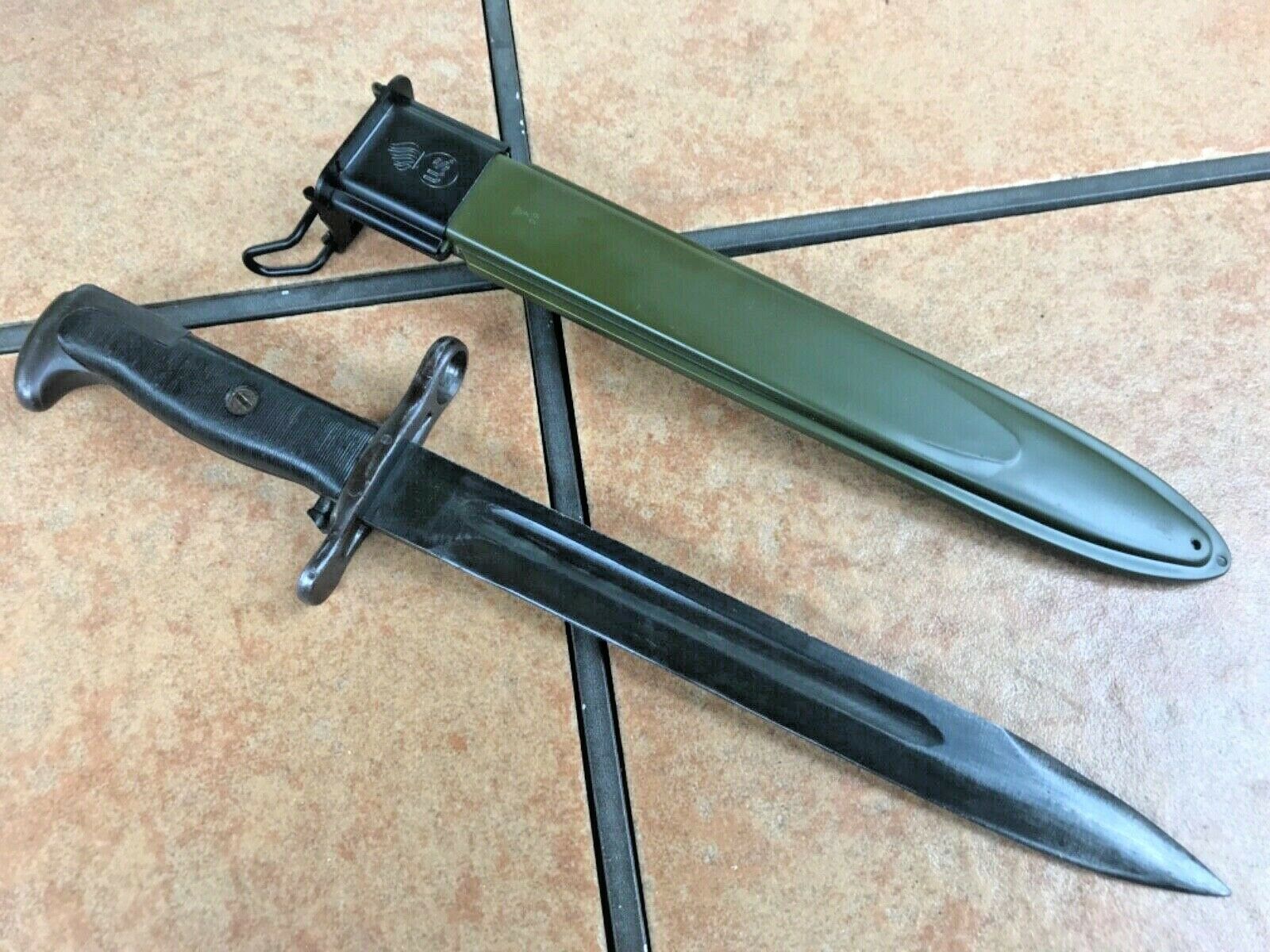-40%
WWII M3 Trench Knife (blade mkd. “US M3 CAMILLUS ”) Factory Edge! Replica!
$ 171.6
- Description
- Size Guide
Description
WWII M3 Trench Knife (BLADE marked!“US M3 CAMILLUS ”) facsimile replica and M6 Scabbard (“U.S. M6 BARWOOD 1943”) facsimile replica.Airborne; Infantry!
This is an
EXACTING FACSIMILE REPLICA
was made to the highest standards by
CAMILLUS
as is the Scabbard.
The
two
features that distinguish this well-made Knife and well-marked Blade from
CAMILLUS
’ wartime production
M3
’s are:
1 - The
BLADE
is “
PARKERIZED
” with a phosphate finish,
NOT BLUED.
2 - The
POMMEL PLATE
is secured to the
TANG
by only
ONE
Pin,
NOT TWO.
Near Mint +++!!!
(NOTE: This is NOT the 'redesigned' M3 that Camillus introduced in the 1980s which was, essentially, a virtual departure from this wartime design, but this example pre-dates that 'experiment' by Camillus!!!)
This was worn suspended from the
M1923 Cartridge
or
M1936 Pistol Belt
by
GROUND
TROOPS
, or lashed to the calf by
PARATROOPERS
in either the
Leather M6 Scabbard
or the
Plastic M8 Scabbard.
Although the unwieldy WWI-era
“Brass-Knuckles-Grip" MARK I Trench Knife
was issued to some troops early in the war -- mainly Airborne troops — th
is M3
quickly replaced it, service wide, being widely preferred!
*****
-
ORIGINAL
Factory Edge!.
-
ORIGINAL
sharp Point.
-
ZERO
nicks or burrs on the Edge and False Edge.
- This is one of the Blade-marked
“US M3 CAMILLUS”
with no date. as were the originals produced in
1943
by the
CAMILLUS
COMPANY.
- The flaming “
ORDNANCE Bomb”
logos is crisply stamped on the pommel plate.
- The
PARKERIZED
Blade
shows the typical light rubs along the mid-rib from the friction plates inside an
M8
SCABBARD
.
-
ZERO
evidence of sharpening!
- The “
8
-
groove
” (despite
ORDNANCE DEPARTMENT Specifications
dated 30 December 1942, that called for
SIX
grooves!)
STACKED LEATHER WASHER
Grip is in
EXCELLENT
condition.
ZERO
rot, carved initials, or significant "denting" of the Washers.
-
ZERO
movement of the
GUARD
.
-
ZERO
rust.
****
Rock Island Arsenal
procurement records establish the the
War Department
purchased
2,590,240
of these
M3
Knives
from at least 9 different contractors during the two production years of
1943
and
1944
.
Even with high production numbers — an
M3 Trench
Knife
in “
NEAR MINT”
condition is,
NOW
in 2021, a
SCARCE
item!!
And though cheap reproductions abound, THIS run from
CAMILLUS
several decades ago with the
CORRECT
sharply defined 45-degree being in the
GUARD
for the Thumb-rest, and a
CORRECTLY
shaped stacked-washer
HANDLE
of the
CORRECT
shade of Leather free of plastic spacers is
ALSO SCARCE.
For collectors and reenactors looking for the
BEST
replica to carry in the field in place of their
MINT ORIGINA
L this is the item.
*****
M6 Leather Scabbard
This
EXACTING FACSIMILE REPLICA
was handmade by a n expert leather smith in the U.K. and shows great attention to the details of the Hardware
BARWOOD
used (e.g. Rivets, Steel Laces at the Throat, Snap, Steel M1910 Belt Hook, Steel Plates).
-
CORRECT
Linen
THREAD
-
CORRECT
undyed Natural Flesh colored
COWHIDE
. Aged in the sun!
-
CORRECT
die used to deeply stamp the
L.J. BARWOOD MFG. COMPANY
logos and contract date, “
U.S. M6 / BARWOOD logos / 1943”.
Developed in 1943 for the M3 Trench Knife, the
ORDNANCE DEPARTMENT Specifications Drawing
dated Jan. 2,1943
called for a Leather Body
SCABBARD
15 7/8” in length,
and Throat to have
8 METAL BELT LACES
at the Throat for reinforcement.
The lower part of the Scabbard was to have a
STEEL
PLATE
riveted to the front and back of the leather to protect the wearer from the Blade Tip.
The leather
M6 SCABBARD
proved to be far too susceptible to the elements in combat and was almost immediately replaced by the
M8 SCABBARD
made of a resin-impregnated canvas “plastic”
*****
Exceptional research by J. Moore, “
THE BARWOOD M6 SCABBARD”
Founded and operated by
Leon J. Barwood
, the company was first based in Allston (Boston), Massachusetts and later moved to Stoneham, Massachusetts.
The firm had a varied product range pre-war; from water pump seals, gaskets for industry, and leather fittings for musical instrument parts — anything that at the time was best made from leather.
They advertised themselves as,
"BARWOOD" LEATHER PACKINGS FOR EVERY PURPOSE / Molded Leather Packings Our Specialty / Boston, Mass.
Leon and his wife Annie had a son in 1896, Victor Hugo. Victor Hugo was to graduate from Harvard in 1916 and serve in the US Army in WW1 as an ordnance Sergeant. Victor married in 1919 and a year later his wife Mabel gave birth to their son, Leon J., named after his grandfather, the company’s founder's father. Victor was later employed as a manager at the family firm and then succeeding his father.
L.
J. Barwood Mfg. Co.
produced 29,000 M6 scabbards at a cost of {{detail_product_description}}.6483 each. Of the 6 makers, the
Barwood
logo was possibly the most interesting.
*****
The
Camillus Cutlery Company,
superb article by Bill Adams and Phil Gibbs, appearing in
BLADE
,
July 27,2012
Knife Collecting: The History of the Camillus M3
To understand the
Camillus M3
, you need to know a bit about the history of the company that originally designed it.
It all ended for the original
Camillus
on February 2007. The old
Camillus
went gone out of business due to poor sales, a workers’ strike and a lockout—and then the long-time knife manufacturer filed for bankruptcy.
Acme United Corporation
bought the company’s brand name and intellectual property rights, relaunching the
Camillus
brand in 2009.
Camillus
hadn’t always had business problems. The company was founded by Charles Sherwood in 1876 and became a good candidate for buying when the
Dingley Tariff Act
, which greatly raised the import duty on knives, was enacted in 1897. The company then had 20 employees.
The War Years
In 1902, Adolph Kastor, a powerhouse of a leader, bought
Camillus
and the company grew quickly.
Camillu
s had grown to over 200 employees by 1910 and produced over 900,000 knives that year alone. During World War I, the manufacturer cranked out over 470,000 knives for the U.S., British, Canadian and Dutch governments.
The company continued to do well during the ’20s and ’30s. It had knife contracts with
Sears Roebuck & Co., Shapleigh Hardware, Simmons Hardware
and
Woolworth
. In fact, in the ’30s
Camillus
had the reputation of being the highest quality maker of knives in the United States.
During WW2 the company made over
15 million knives for the U.S. Armed Forces
. Throughout the Vietnam War,
Camillus
produced the GI four-blade utility knife, the pilot survival knife andthe
U.S. Marine Corps
7-inch
Mark II.
(Author’s note:
Camillus
had
developed the Mark II
during World War II, and
made more Mark II’s than anyone else, though the Marines still called the Camillus-designed Mark II knife “the Ka-Bar”!)
The New-and-Improved Camillus M3
In the 1980s, the U.S. Armed Forces discussed improving the
M3
. Then in issue to troops, the M
3
having been first produced and issued in 1943.
Of course, that was very interesting to
Camillus
—the company had designed the
M3
in 1942—and military contracts, with additional sales in the commercial market to users and collectors, would be very welcome.
The
Camillus
prototype shop started work on improving the new
M3
design. Most everyone thought the blade was OK as it was—6.5 inches long, .85 inch wide and made of carbon steel.
he stacked leather handle had five grooves and was longer (4.7 inches) than the World War II version of the knife. The handle diameter was larger (1.2 inches wide) and had a pinned-on stepped pommel 1.35 inches wide.
The guard was a little wider than the one on the World War II knife. The lower leg/quillon was marked on the front with a capital “M” in a circle over the number “4.” The new design M3 weighed 9 ounces finished.
One of the things the U.S. Armed Forces learned in Vietnam was the importance of guarding against mold and insects—leather handles had deteriorated quickly in the jungle.
As a result, the new knife’s handle was saturated with deterrent. It would use the current fiberglass M8A1 sheath, the same sheath in issue for the M7 bayonet.
The
M3, (so-called)
was born again.












